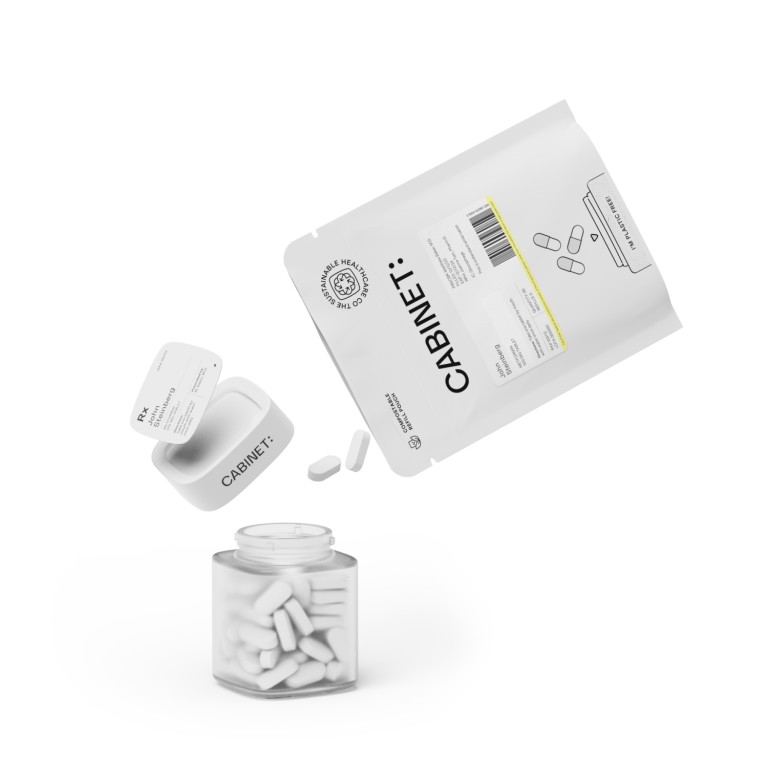Amoxicillin/Clavulanate Potassium, commonly known by its brand name Augmentin, is a powerful antibiotic that offers numerous benefits and has a wide range of uses in the medical field. Augmentin combines two active ingredients, amoxicillin and clavulanate, which work synergistically to effectively combat bacterial infections. Understanding the mechanisms of action, benefits, and specific uses of Augmentin is crucial in order to fully appreciate its potential in the realm of medicine.
Understanding Amoxicillin/Clavulanate Potassium (Augmentin)
What is Amoxicillin/Clavulanate Potassium?
Amoxicillin/Clavulanate Potassium, also known as Augmentin, is a combination antibiotic medication that belongs to the penicillin family. This powerful duo consists of amoxicillin, a penicillin antibiotic that inhibits the growth of bacteria, and clavulanate, a beta-lactamase inhibitor that neutralizes enzymes responsible for bacterial resistance. By working together, these two components enhance the efficacy of Augmentin, making it a reliable weapon against bacterial infections.
How Does Augmentin Work?
The mechanism of action of Augmentin is based on its potent antibacterial properties. Amoxicillin targets the cell wall of bacteria, preventing their growth and ultimately leading to their death. However, some bacteria possess enzymes called beta-lactamases, which can render amoxicillin ineffective. This is where clavulanate comes into play, as it inhibits these enzymes, allowing amoxicillin to exert its full potential. By combining these two agents, Augmentin overcomes bacterial resistance and ensures a greater chance of successful treatment.
It is important to note that the effectiveness of Augmentin is not limited to a specific type of bacteria. This broad-spectrum antibiotic is capable of combating a wide range of bacterial infections, including respiratory tract infections, skin and soft tissue infections, urinary tract infections, and even certain types of sexually transmitted infections. This versatility makes Augmentin a go-to choice for many healthcare professionals when faced with bacterial infections of various origins.
Furthermore, the combination of amoxicillin and clavulanate in Augmentin offers an advantage over using amoxicillin alone. By inhibiting beta-lactamases, clavulanate extends the spectrum of activity of amoxicillin, allowing it to target bacteria that would otherwise be resistant. This synergy between the two components not only increases the chances of successful treatment but also reduces the likelihood of developing antibiotic resistance.
The Benefits of Augmentin
Treating Bacterial Infections
Augmentin is highly effective in treating a wide range of bacterial infections. From respiratory tract infections, such as sinusitis and pneumonia, to skin and soft tissue infections, including cellulitis and abscesses, Augmentin offers a potent solution. Additionally, it can be used to treat urinary tract infections, otitis media, and certain sexually transmitted infections caused by susceptible organisms. Its broad spectrum of action makes Augmentin a versatile and valuable antibiotic in the medical arsenal.
Preventing Infections After Surgery
Another noteworthy benefit of Augmentin is its ability to prevent postoperative infections. Surgical procedures inherently carry a risk of infection due to the invasive nature of the interventions. Augmentin's potent antibacterial activity helps reduce this risk by preventing the growth and spread of bacteria in the surgical site. By offering prophylaxis against common pathogens, Augmentin plays a crucial role in ensuring successful surgical outcomes and reducing patient morbidity.
Moreover, Augmentin's effectiveness in treating bacterial infections is further enhanced by its unique combination of amoxicillin and clavulanic acid. Amoxicillin, a penicillin-class antibiotic, inhibits the growth of bacteria by interfering with their cell wall synthesis. However, some bacteria have developed resistance mechanisms that produce enzymes called beta-lactamases, which can inactivate amoxicillin. This is where clavulanic acid comes into play. Clavulanic acid is a beta-lactamase inhibitor that protects amoxicillin from being destroyed by these enzymes, allowing it to continue fighting the infection.
In addition to its potent antibacterial properties, Augmentin also boasts excellent oral bioavailability. This means that after oral administration, the drug is rapidly and efficiently absorbed into the bloodstream, ensuring optimal therapeutic levels are achieved. This high bioavailability is crucial for achieving successful treatment outcomes, as it allows Augmentin to reach the site of infection effectively and exert its bactericidal effects.
The Uses of Augmentin
Common Conditions Treated with Augmentin
Augmentin is prescribed for various common conditions caused by bacterial infections. Respiratory tract infections, such as bronchitis and tonsillitis, can often be effectively treated with Augmentin. This powerful antibiotic targets the bacteria responsible for these infections, helping to alleviate symptoms and promote recovery. It is important to note that Augmentin should only be used as directed by a healthcare professional, as improper use can contribute to antibiotic resistance.
In addition to respiratory tract infections, Augmentin is also highly effective in treating skin and soft tissue infections. Infected wounds and impetigo, a highly contagious skin condition, respond well to Augmentin therapy. By inhibiting the growth of bacteria and reducing inflammation, Augmentin helps to clear up these infections and prevent further complications.
Furthermore, Augmentin is commonly used to combat urinary tract infections (UTIs), which frequently occur in both genders. UTIs can cause discomfort and pain, and if left untreated, they can lead to more serious complications. Augmentin's broad-spectrum action targets the bacteria responsible for UTIs, providing relief and promoting healing. Its efficacy against these conditions highlights its importance in primary care settings, where prompt and effective treatment is crucial.
Off-Label Uses of Augmentin
Although Augmentin is primarily indicated for specific infections, it may sometimes have off-label uses. Off-label use refers to the use of a medication for a purpose other than what is approved by regulatory agencies. Augmentin has shown promise in treating certain atypical bacterial infections, such as Lyme disease and community-acquired pneumonia.
Lyme disease, caused by the bacterium Borrelia burgdorferi, is typically transmitted through tick bites. If left untreated, it can lead to serious complications, including joint inflammation and neurological problems. Augmentin, with its potent antibacterial properties, has been found to effectively combat the bacteria responsible for Lyme disease, helping patients recover and prevent long-term complications.
In the case of community-acquired pneumonia, Augmentin has been used off-label as an alternative treatment option. This type of pneumonia is acquired outside of healthcare settings and is caused by various bacteria, including Streptococcus pneumoniae. Augmentin's broad-spectrum action makes it a valuable option in select cases, providing a potential alternative for patients who may not respond to other antibiotics.
It is important to note that while off-label use of Augmentin may be supported by medical evidence and clinical experience, it should always be prescribed and monitored by a healthcare professional. They will assess the individual's specific condition and determine the most appropriate treatment plan, taking into account potential risks and benefits.
Safety and Side Effects of Augmentin
Common Side Effects
Like any medication, Augmentin may elicit side effects, although they are generally well-tolerated. Common side effects include gastrointestinal disturbances, such as nausea, vomiting, and diarrhea. It is important to note that these side effects are usually mild and transient. If they persist or become severe, it is advisable to consult a healthcare professional for proper guidance and management.
Serious Side Effects and Warnings
While uncommon, Augmentin may also cause serious side effects that require immediate medical attention. These include severe allergic reactions, such as rash, itching, swelling, or difficulty breathing. Additionally, Augmentin has been associated with rare but serious adverse events, such as liver damage, which may manifest as yellowing of the skin or eyes (jaundice) and dark urine. It is crucial to promptly report any unusual symptoms or concerns to a healthcare provider.
Dosage and Administration of Augmentin
Determining the Right Dosage
The appropriate dosage of Augmentin depends on factors such as the severity of the infection, the patient's age and weight, and the presence of other medical conditions. Healthcare professionals carefully assess these variables to determine the optimal dose for each patient. It is essential to strictly adhere to the prescribed dosage and complete the full course of treatment, even if symptoms improve. This ensures the successful eradication of the infectious agent and minimizes the risk of drug resistance.
Instructions for Taking Augmentin
Augmentin is typically available in tablet or suspension form, allowing flexibility in administration. Tablets should be swallowed whole, while suspensions can be taken with or without food. It is important to follow the instructions provided by the healthcare professional or read the accompanying medication leaflet for precise dosing and administration guidance. Additionally, storing Augmentin according to the manufacturer's recommendations helps maintain its stability and effectiveness.
In conclusion, Amoxicillin/Clavulanate Potassium, known as Augmentin, offers a multitude of benefits and uses in the field of medicine. Its potent antibacterial properties make it effective in treating various infections, from respiratory and skin infections to urinary tract infections and beyond. Moreover, it plays a pivotal role in preventing postoperative infections, enhancing surgical outcomes, and reducing patient morbidity. Augmentin's safety profile, common and rare side effects, as well as proper dosage and administration guidelines, contribute to its overall reliability. By understanding the benefits and uses of Augmentin, healthcare professionals can leverage this antibiotic tool to combat bacterial infections effectively.








